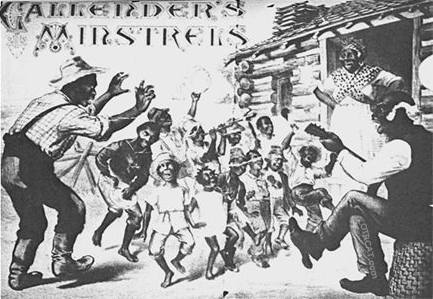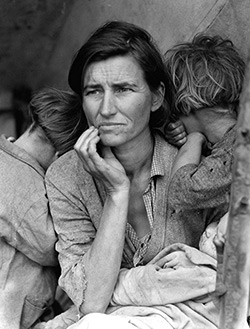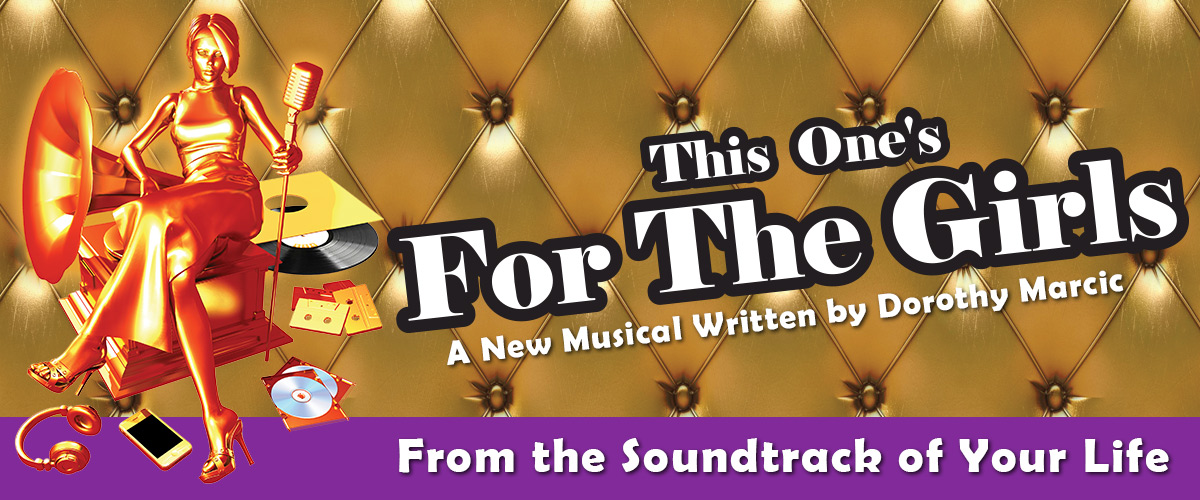Background

An early minstrel show.
This One’s For the Girls the Musical began in 1999 through research on content-analysis of women’s Top-40* songs. It was thought to go back as far as the first women’s rights conference was in Seneca Falls, New York July 1848. However, popular music did not begin until around 1900. Previously, there had been choral music, ballroom melodies, mountain folk music (of British Isles origins), or European operatic songs. Two noteworthy revolutions occurred in American music: a) in the 1840s the new Minstrel shows with high-energy songs were much different from the slow, sentimental songs of genteel folks; and b) in the early years of the 1900s when the fox-trot introduced syncopated beats to the American ear. Both of these revolutions can be attributed to African influences. Popular music started as a result of former slaves moving to Memphis and north, taking their beat-laden, emotionally packed music with them. Negro spirituals developed into two types of music–gospel and The Blues, God’s music and that for the “Devil.” The cross-pollination of European melodies with African beat and the messages in folk music created what we now call Popular Music.
Though there were more than 20,000 Top-40 songs from 1900 to 2000, women singers made up an average of 10 percent of those Top-40. The initial phase of the project was an analysis of the lyrics of the 2,501 female-sung songs, categorizing them and tracking those categories through each decade.
It was identified that there were four major phases in the musical portrayal of women: Childhood Codependent (I Will Follow Him, Diamonds are a Girls Best friend) to Teenage Rebel (You Don’t Own Me, These Boots are Made for Walkin’) to Young Adult Cynic (What’s Love got to Do With It?) to Mature Adult (Greatest Love of All), in accordance with timeline below:
| Childhood Co-dependent | 1900 to early 60s |
| Teenage Rebel | mid-60s to 70s |
| Young Adult | cynic 70s to mid-80s |
| Mature Adult | late 80s to present |

Dorothea Lange, ‘Destitute peapickers in California; a 32 year old mother of seven children.’ Photo: The Library of Congress
Though the categories overlap somewhat, there were definite trends of certain themes in music being more popular at different times. The Teenage Rebel was not really seen until the 60s, and the Young adults Cynic, though represented with scattered songs previously (Love for Sale; Ten Cents a Dance, both during the Great Depression), was not a real category until the mid-70s. Although there are still many co-dependent songs today, the codependent songs went from about 65% of the total in the 60s, to about 30% of the total since the 90s. More information on song categories through the decades in listed in the Appendices.
*The format for determining Top-40 songs became normalized in 1939 when Billboard became the industry standard. Before that, figures are less precise and not as thorough. Therefore it was nearly impossible to look at women’s percentage of hits by year (rather than decade) before 1940.

